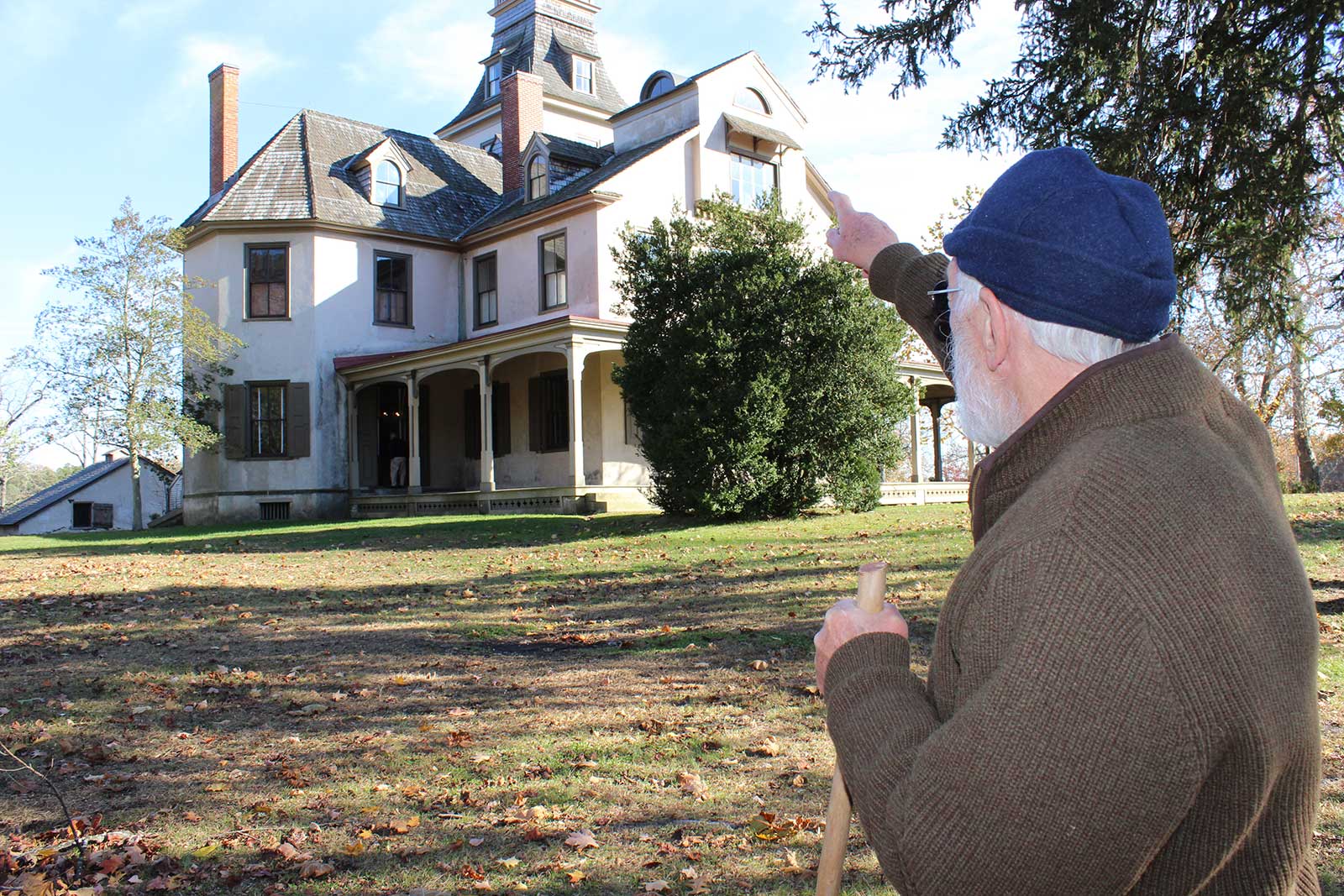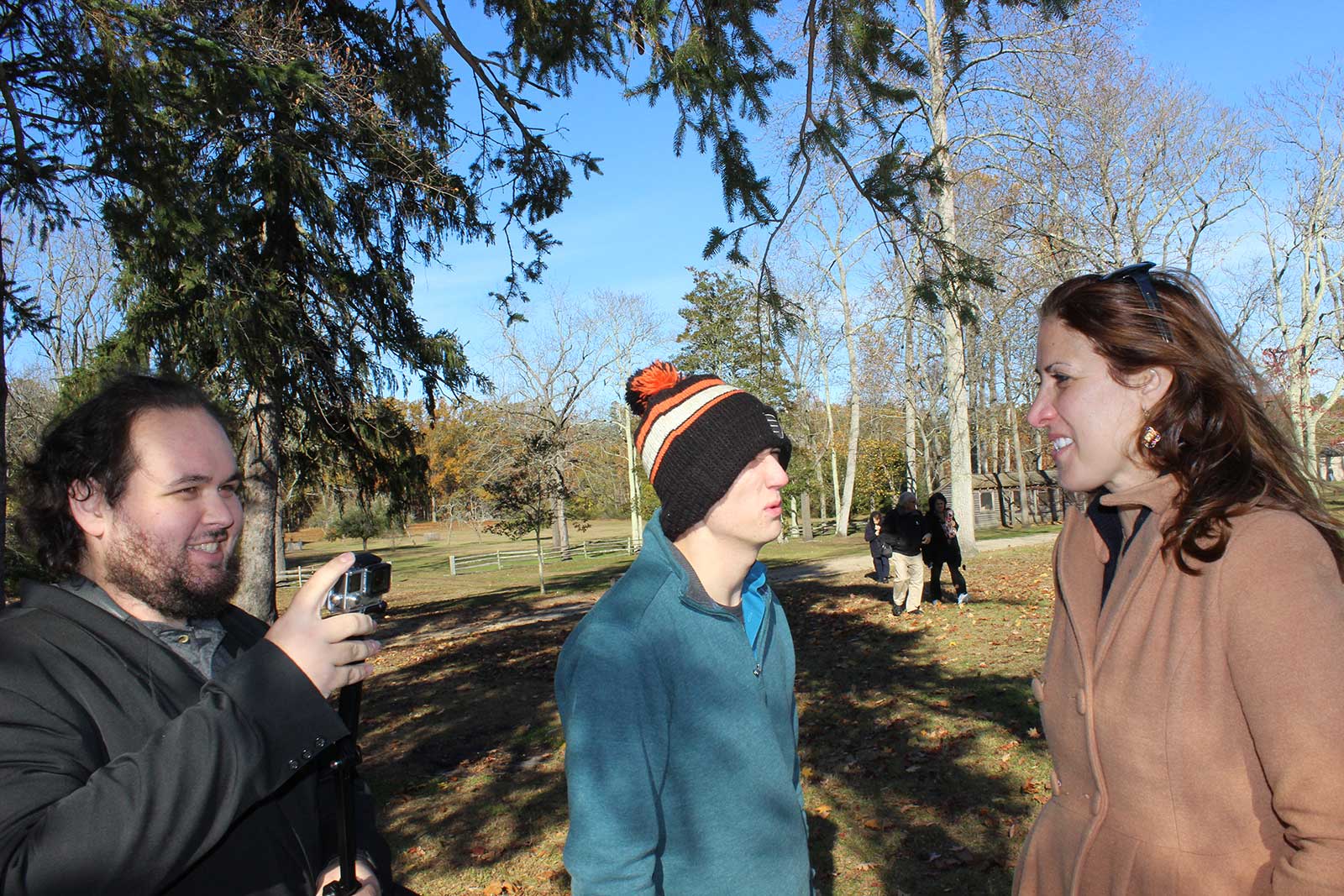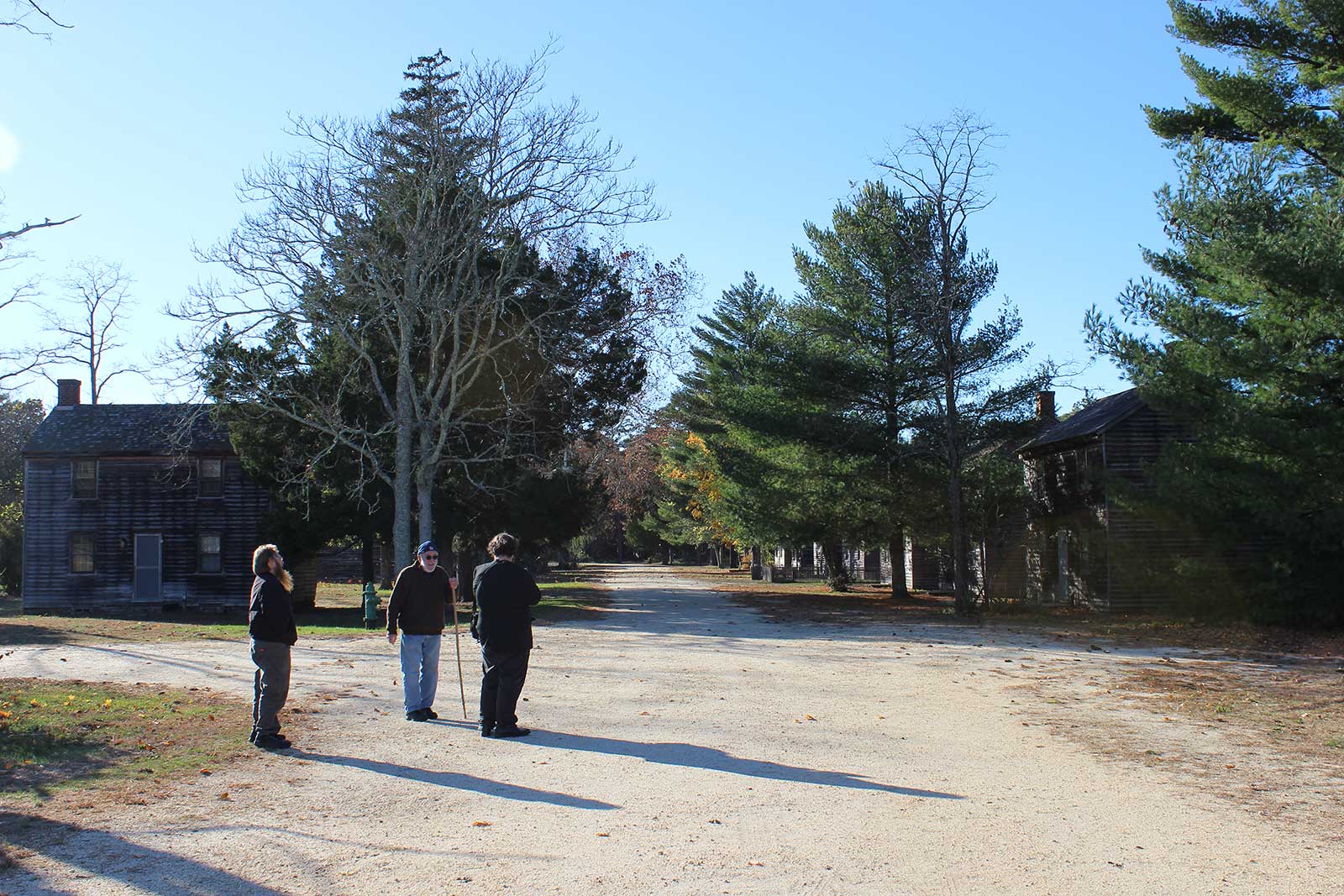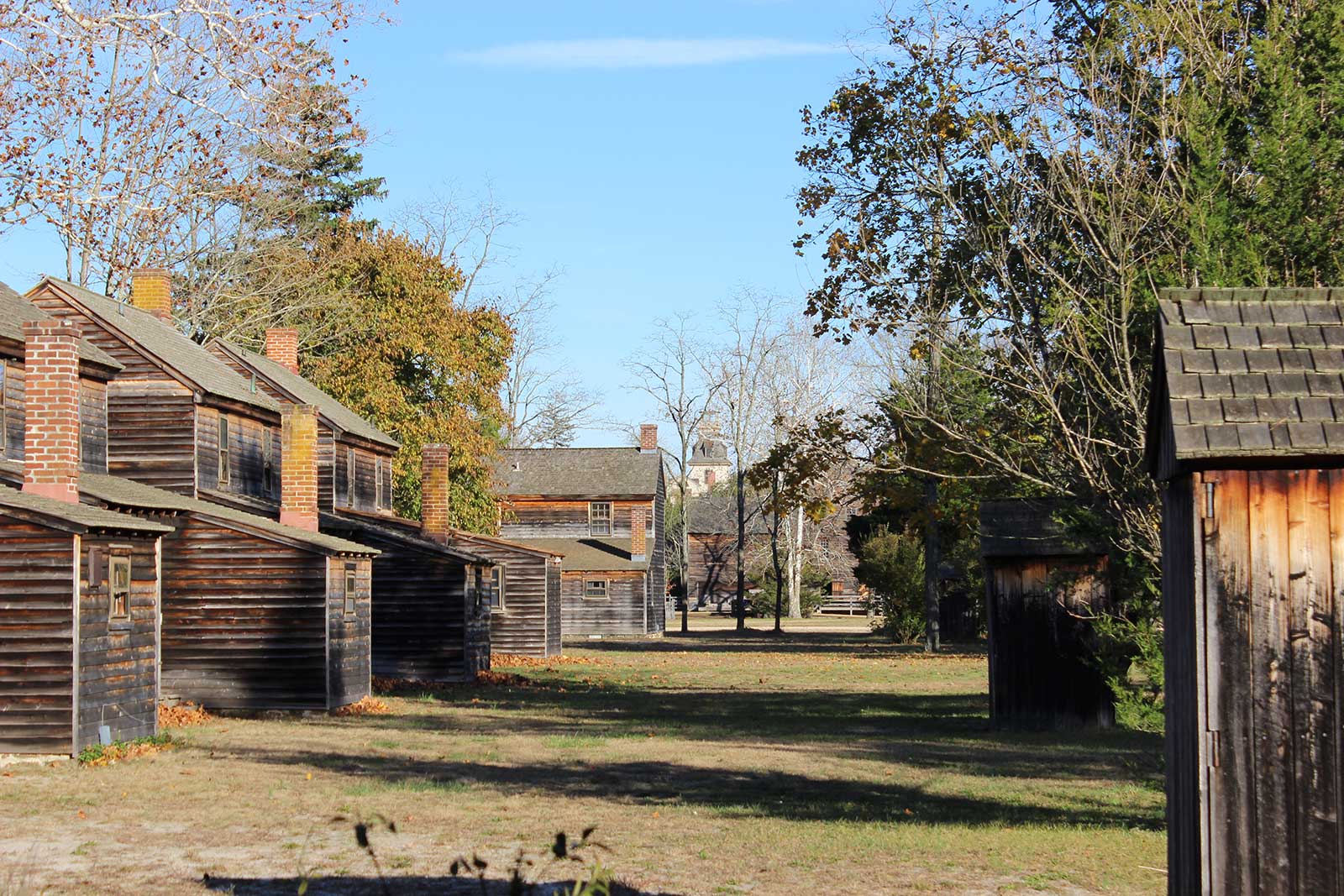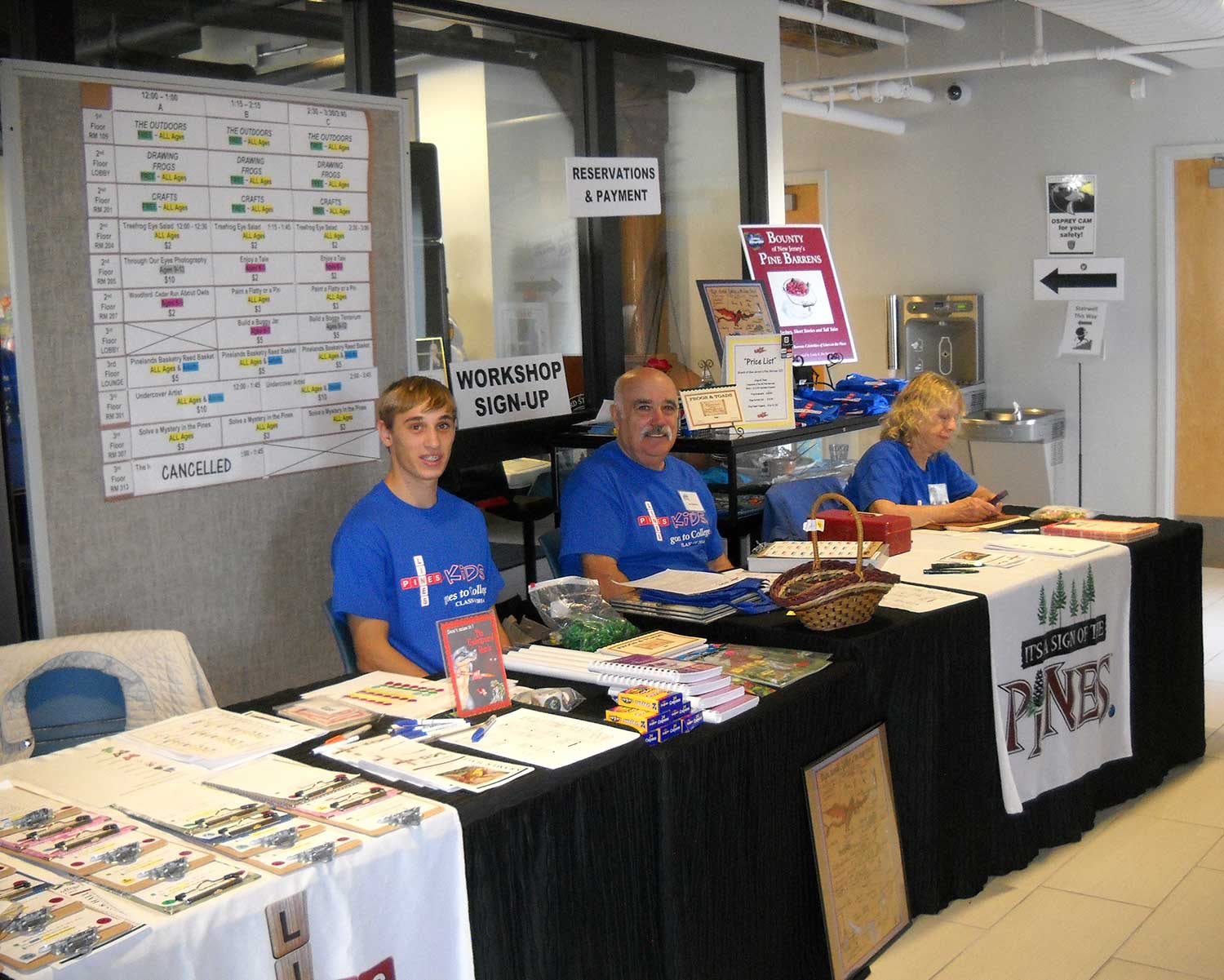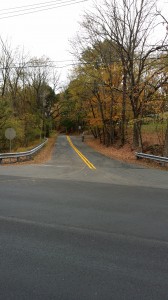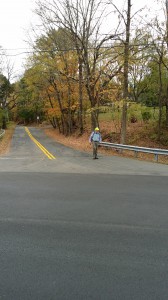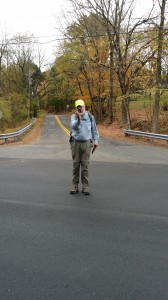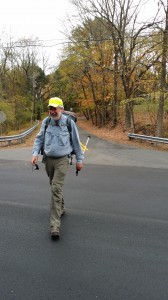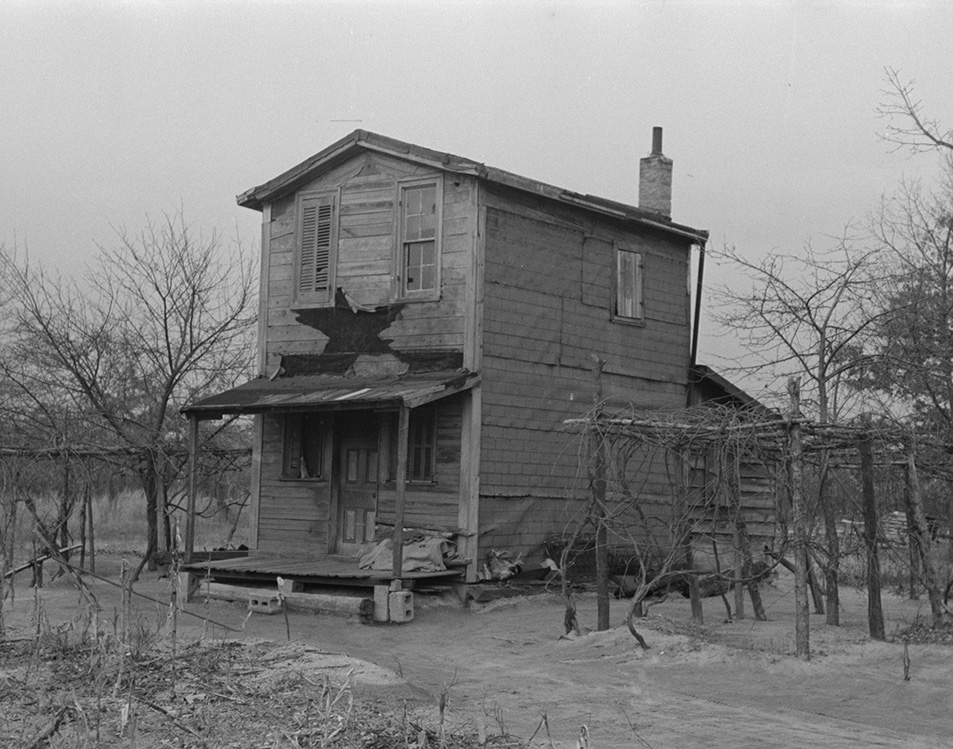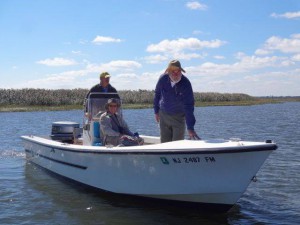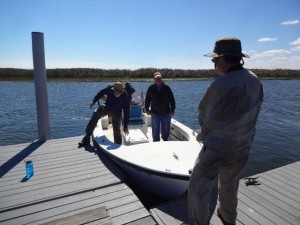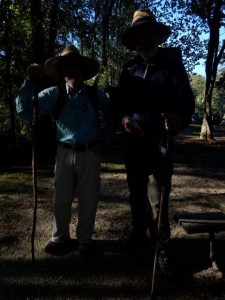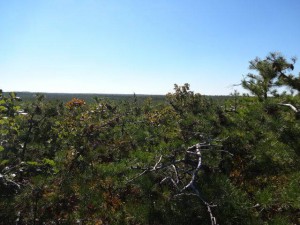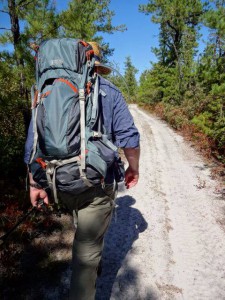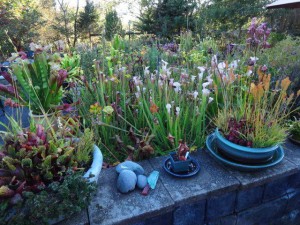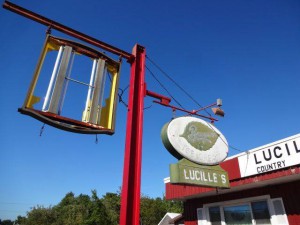
Bill Bolger will be ending his walk along the Keith Line tomorrow as he reaches Three Bridges, the same point that George Keith ceased from his surveying efforts as no British population existed beyond that point. A negotiated compromise took the province line eastward and away from Bill’s current trajectory. Bill hopes to complete his walk to the Delaware Water Gap in either spring or fall of 2015. In an effort to bring all up to date on where this walk has taken him, the following narrative will begin at Lucille’s and move northward along the line. After leaving Lucille’s, our intrepid walker continued along the Keith Line.
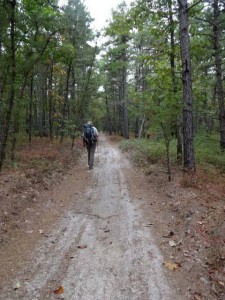 And at times, the trail narrowed considerably.
And at times, the trail narrowed considerably.
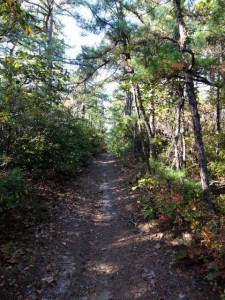 Bill passed many natural wonders, ranging from rocks covered with moss and pyxie cups to cedar swamps and bogs.
Bill passed many natural wonders, ranging from rocks covered with moss and pyxie cups to cedar swamps and bogs.
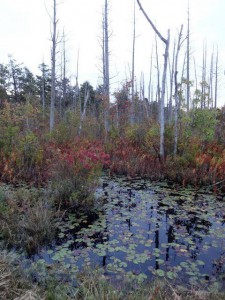
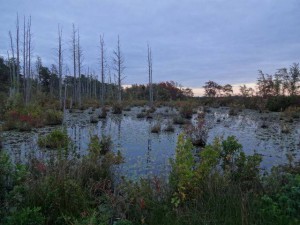
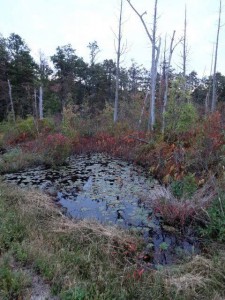
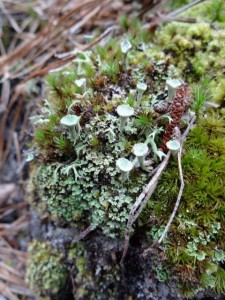 As the afternoon waned, Bill walked up Butler Place Road, dropped his full pack and took a rest before prepared his encampment along the Keith Line.
As the afternoon waned, Bill walked up Butler Place Road, dropped his full pack and took a rest before prepared his encampment along the Keith Line.
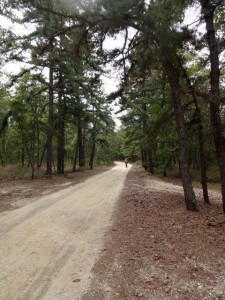
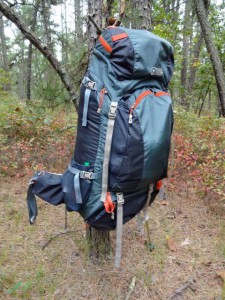
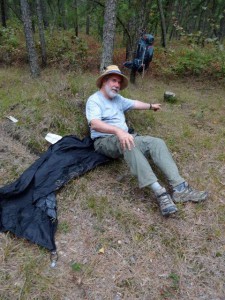
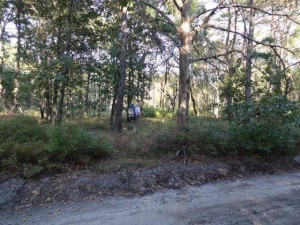 He was so precise about placing his shelter that he enclosed this boundary stone for Burlington and Ocean counties within the entrance to his tent.
He was so precise about placing his shelter that he enclosed this boundary stone for Burlington and Ocean counties within the entrance to his tent.
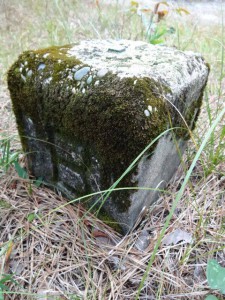 On 30 September, Bill reached Whitesbog, where he lived at one time. The staff had prepared all the comforts of home for him in Suningive, the residence of the late Elizabeth Coleman White, who, working with Massachusetts native Fred Coville, brought the commercial blueberry to the marketplace.
On 30 September, Bill reached Whitesbog, where he lived at one time. The staff had prepared all the comforts of home for him in Suningive, the residence of the late Elizabeth Coleman White, who, working with Massachusetts native Fred Coville, brought the commercial blueberry to the marketplace.
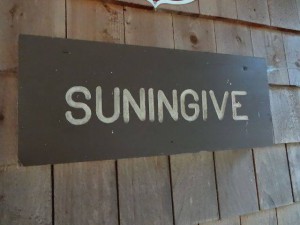
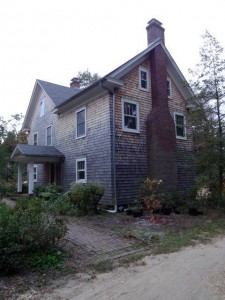
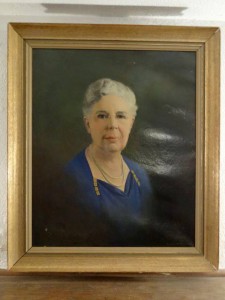
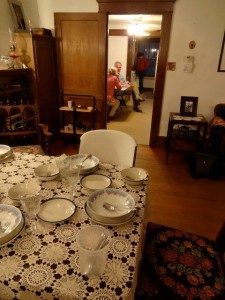
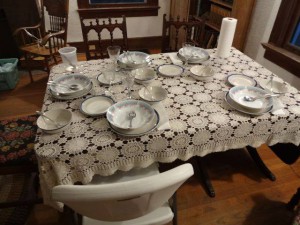
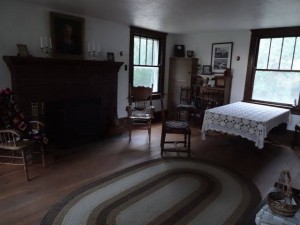
Before continuing his walk on 1 October, Bill examined the flowering Franklinia Tree outside of Suningive and then proceeded out to view the still active cranberry bogs at Whitesbog.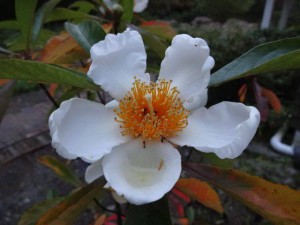
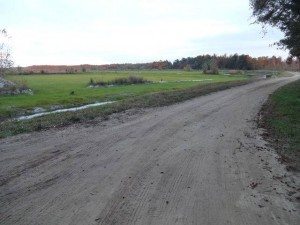
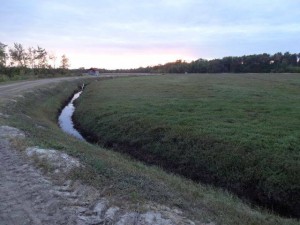
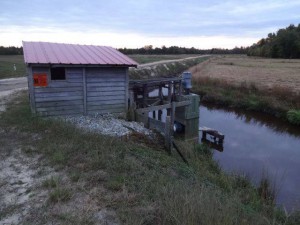
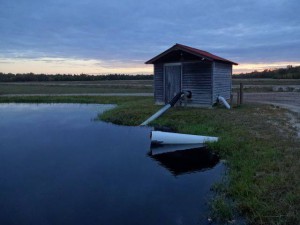
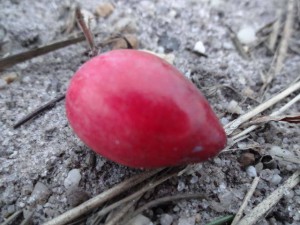
On his trek to New Egypt, Bill passed a number of horse farms, including the late Stanley Dancer‘s farm.
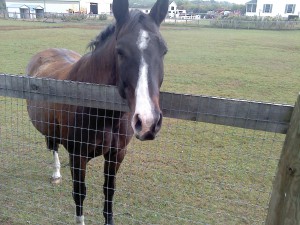
While passing that farm, he found the grave of standardbred mare Elusive Amber, who birthed a number of champion harness-racing horses. As the grave maker states, “No horse was ever loved more.” These are the words of Stanley Dancer.
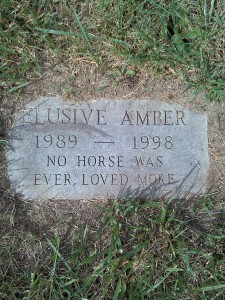
On the afternoon of 3 October, Bill strolled into New Egypt, which welcomed him to town after he had walked an aggregate of 52.4 miles.
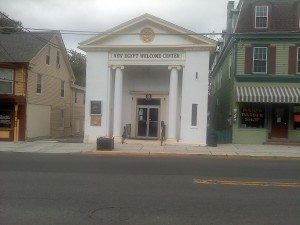 He stayed overnight in the Inn at Laurita Winery in New Egypt. Bill awoke prepared to walk to Waln’s Mill in Monmouth County. Passing through Arneytown, Bill entered the Upper Freehold Friends Burying Ground along Province Line Road. He found the grave of Abraham Tilton Sr., a veteran of the American War for Independence.
He stayed overnight in the Inn at Laurita Winery in New Egypt. Bill awoke prepared to walk to Waln’s Mill in Monmouth County. Passing through Arneytown, Bill entered the Upper Freehold Friends Burying Ground along Province Line Road. He found the grave of Abraham Tilton Sr., a veteran of the American War for Independence.
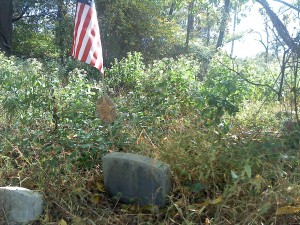
Arriving at Waln’s Mill in Walnford, on Saturday, 4 October after walking another 9.7 miles, Bill encountered the Colonel, who took him for a complete guided tour of the gristmill.
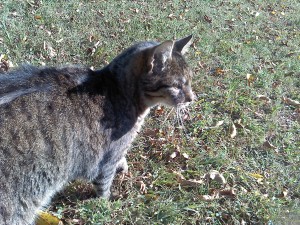 He stayed overnight at Peacefields Inn. Rising early, Bill set out for the Woodrow Wilson Rest Stop on the New Jersey Turnpike, a distance of 6.3 miles. After arriving at the rest stop, a friend picked Bill up and whisked him away to a private farm in the Allentown, New Jersey area, where Bill spent the night.
He stayed overnight at Peacefields Inn. Rising early, Bill set out for the Woodrow Wilson Rest Stop on the New Jersey Turnpike, a distance of 6.3 miles. After arriving at the rest stop, a friend picked Bill up and whisked him away to a private farm in the Allentown, New Jersey area, where Bill spent the night.
The next morning, Bill headed for Robbinsville, Mercer County, where he would cross the historic corridor of the Camden & Amboy Railroad and Transportation Company, the first railroad constructed in New Jersey. He crossed Route 1 in Mercer County on 7 October, having walked a total of 81 miles, and the following day, he entered Princeton along Province Line Road and spend the night at Jasna Polana.
On 9 October, Bill set out from Princeton, stopping by the beautiful and historic Stony Brook Friends’ Meeting House before striking out for the Hopewell area of Mercer County. Here, Bill encountered a monument erected in 1971 by the Society of Colonial Wars of New Jersey to commemorate Province Line Road.
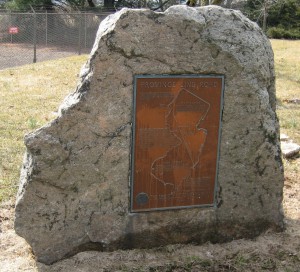 Staying at a private residence last night, Bill began walking at 10:00 a.m. this morning and hopes to reach Three Bridges, Readington Township, Hunterdon County, sometime later today. Keith ended his survey work here and Bill will end his 2014 walk here. Michele Byers, executive director of the New Jersey Conservation Foundation, wrote a blog article about Bill’s walk along the Keith Line a week ago and paid homage to the Richard Stockton College of New Jersey support and a link to this blog: http://www.njconservation.org/blog/ .
Staying at a private residence last night, Bill began walking at 10:00 a.m. this morning and hopes to reach Three Bridges, Readington Township, Hunterdon County, sometime later today. Keith ended his survey work here and Bill will end his 2014 walk here. Michele Byers, executive director of the New Jersey Conservation Foundation, wrote a blog article about Bill’s walk along the Keith Line a week ago and paid homage to the Richard Stockton College of New Jersey support and a link to this blog: http://www.njconservation.org/blog/ .

